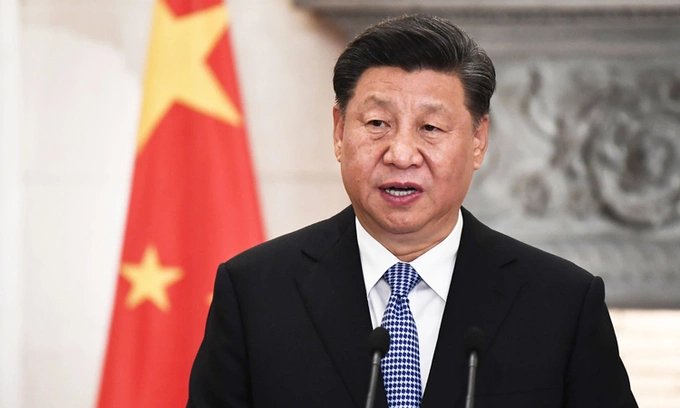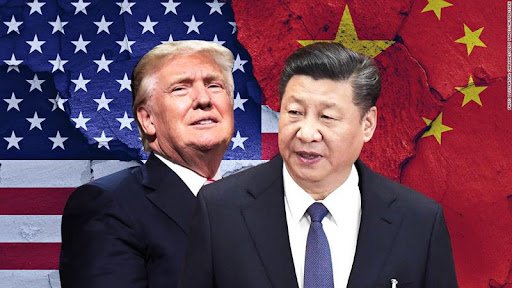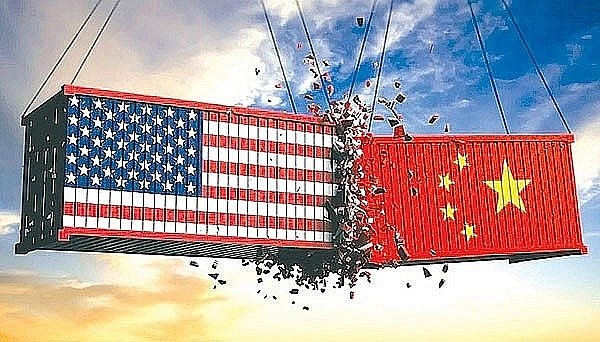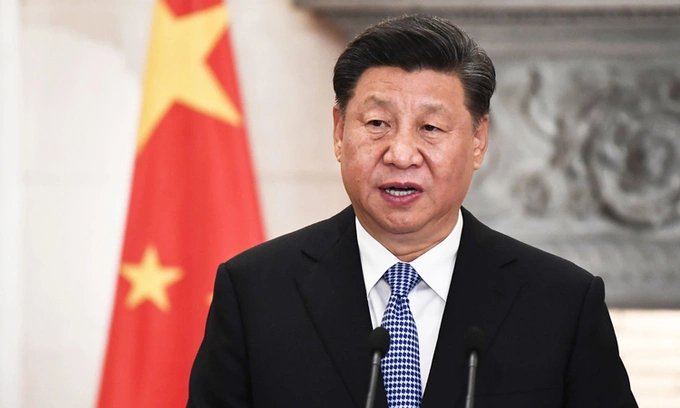The trade war between the United States and China has been one of the most defining economic conflicts of the 21st century. Rooted in longstanding tensions over intellectual property, unfair trade practices, and geopolitical power, this standoff has triggered tariffs, sanctions, and intense policy debates. However, beneath the surface of economic bravado and retaliatory tariffs lies a critical vulnerability that many experts believe could be America’s ‘Achilles heel’ in this conflict — its dependence on China in key sectors. As the trade war continues to evolve, understanding this weak spot is essential to gauge the true balance of power.
**America’s Reliance on Chinese Manufacturing**

One of the most significant aspects of the U.S.-China economic relationship is America’s deep reliance on Chinese manufacturing. For decades, American corporations have outsourced the production of everything from electronics to clothing to Chinese factories, capitalizing on lower labor costs and streamlined supply chains. While this has benefited U.S. businesses and consumers by keeping costs down, it has also created a structural dependency.
When tariffs were introduced during the Trump administration, many American companies were caught off guard. They realized just how deeply their supply chains were embedded in China. Reconfiguring those supply chains, especially for industries such as consumer electronics, pharmaceuticals, and automotive parts, proved not only expensive but logistically complex.
**Rare Earth Elements: A Strategic Weakness**
Perhaps the most critical dependency — and America’s true Achilles heel — lies in rare earth elements (REEs). These 17 elements are essential for producing a vast range of high-tech products, including smartphones, electric vehicles, advanced weapons systems, and renewable energy technologies. China controls over 60% of global rare earth mining and nearly 90% of refining capacity.
During the height of the trade tensions, Chinese state media hinted at the possibility of cutting off rare earth exports to the U.S. This sent shockwaves through American defense and technology sectors, as such a move could cripple production capabilities. Despite efforts by the U.S. to invest in domestic rare earth mining, it remains years behind China’s established infrastructure.
**Pharmaceutical Supply Chains at Risk**

Another often-overlooked vulnerability is the pharmaceutical supply chain. The U.S. relies heavily on Chinese suppliers for active pharmaceutical ingredients (APIs), the essential components of most medications. A disruption in this supply, whether due to trade restrictions or geopolitical conflict, could have devastating public health consequences.
The COVID-19 pandemic underscored this risk when global supply chains were strained, and concerns emerged about potential shortages of life-saving drugs. While the U.S. has begun to explore strategies to reshore or diversify its pharmaceutical supply chain, progress has been slow and politically contentious.
**Technology and Intellectual Property Battles**
Intellectual property (IP) theft has been a central complaint of the U.S. in its trade disputes with China. American firms have long accused Chinese companies of copying technology or being forced to transfer IP in joint ventures. In response, the U.S. has imposed export restrictions on Chinese tech giants such as Huawei and ZTE, citing national security concerns.
However, this move has had a boomerang effect. American tech companies like Qualcomm, Intel, and Apple rely on the Chinese market for a significant portion of their revenue. Cutting off ties or restricting exports risks shrinking their global market share, ultimately weakening U.S. competitiveness.
Additionally, China has been pouring investments into developing homegrown alternatives to Western technologies, such as semiconductors and operating systems. Over time, this push could erode American tech dominance, especially in Asia and Africa, where Chinese tech is gaining rapid traction.
**Agriculture: The Retaliation Target**

American farmers have found themselves on the front lines of the trade war, as China has consistently targeted agriculture in its retaliatory tariffs. U.S. exports of soybeans, corn, pork, and other agricultural products have suffered due to Chinese countermeasures, leading to plummeting incomes and widespread bankruptcies among rural producers.
Although the U.S. government has offered subsidies and financial relief to affected farmers, the long-term damage to trade relationships and market share is difficult to reverse. China has increasingly turned to countries like Brazil, Argentina, and Russia to diversify its agricultural imports, potentially sidelining American farmers permanently.
**Semiconductors and the Global Tech War**
Semiconductors have become a central battleground in the U.S.-China economic rivalry. These tiny chips are the backbone of all modern electronics, from smartphones to fighter jets. The U.S. is a leader in chip design, but much of the manufacturing is done in Asia — notably Taiwan, South Korea, and increasingly, China.
To limit China’s access to advanced chip technology, the U.S. has imposed export controls and persuaded allies to restrict semiconductor equipment sales to Chinese firms. Yet, this strategy is a double-edged sword. Many U.S. chip companies derive substantial income from Chinese customers. Furthermore, if China accelerates its domestic chip development, it could create a parallel ecosystem, reducing global reliance on American tech.
**Consumer Goods and Inflation Pressures**
One of the unintended consequences of the trade war has been rising prices for American consumers. Tariffs imposed on Chinese imports have driven up costs for goods ranging from electronics to clothing to home appliances. Retailers, unable to absorb the increased costs, have passed them on to consumers, contributing to inflationary pressures.
The situation is compounded by the fact that there are few viable alternatives to Chinese manufacturers that can offer the same scale, cost-efficiency, and speed. As a result, shifting away from China may take years and require significant investment, making short-term pain inevitable for consumers and businesses alike.
**China’s Expanding Global Influence**

While the U.S. has been focused on decoupling from China, the latter has been steadily building stronger economic ties across Asia, Africa, and Latin America. Through initiatives like the Belt and Road Initiative (BRI), China is investing in infrastructure, securing trade agreements, and gaining access to critical resources.
These efforts are helping China reduce its dependence on the U.S. while increasing its leverage globally. In contrast, America’s go-it-alone trade strategies have sometimes alienated traditional allies, making it harder to present a united front against Chinese economic aggression.
**Resilience or Overconfidence?**
Some American policymakers argue that the U.S. can absorb the shocks of a trade war and emerge stronger by rebuilding domestic industries. Initiatives to reshore manufacturing, invest in infrastructure, and promote “Buy American” campaigns have gained momentum.
However, critics warn that underestimating China’s strategic patience and global reach could backfire. The U.S. economy, while robust, is not immune to sustained disruptions. If key sectors continue to rely on Chinese inputs and markets, then the notion of American resilience may prove overly optimistic.
**Strategic Recommendations for the U.S.**
To address its vulnerabilities, the U.S. must adopt a multi-faceted approach:
1. **Diversify Supply Chains**: Encouraging businesses to spread manufacturing across multiple countries can reduce dependence on any single source, including China.
2. **Invest in Domestic Capabilities**: Strengthening domestic production of pharmaceuticals, semiconductors, and rare earths is essential for long-term independence.
3. **Build Alliances**: Collaborating with allies to create unified trade strategies can increase leverage over China and mitigate retaliatory risks.
4. **Enhance Technological Leadership**: Doubling down on R&D, STEM education, and innovation incentives can ensure the U.S. remains at the forefront of global tech.
5. **Support Affected Industries**: Providing transitional support to industries most impacted by the trade war can prevent long-term economic displacement.
**Conclusion**
The trade war with China has revealed a paradox for the United States. While it remains the world’s largest economy and a technological superpower, it is also deeply dependent on China for essential goods, materials, and market access. This reliance — whether on rare earths, pharmaceuticals, or manufacturing — represents America’s true Achilles heel.
Winning a trade war is not merely about imposing tariffs or restricting exports. It is about building resilience, securing critical infrastructure, and forging sustainable economic partnerships. Until the U.S. addresses these systemic weaknesses, any confrontation with China will carry significant risks — not just for trade, but for national security and global leadership.
